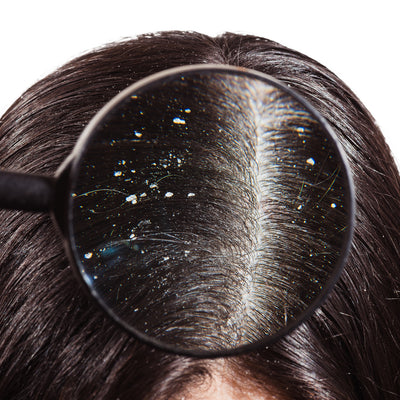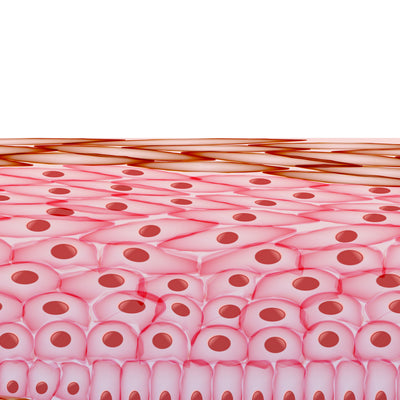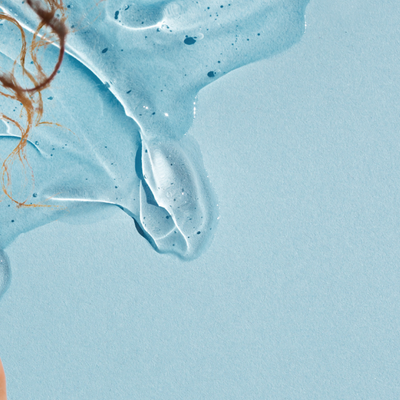
Detangle Without Damage
Earthtones Naturals| February 21, 2022
When we consult with clients, a lot of them have issues with hair breakage. We’ll discuss breakage at length in another post and how to address it. However when examining their regimens there is always something that stands out clearly. They are detangling their hair WAY too frequently and positioning it in their regimen in such as way that it’s leading to more tangling, tearing and subsequent damage.
Why Detangle?
To understand how to detangle the hair and when to do it, let’s examine why we need to detangle in the first place.
The shape of African textured hair - in it’s unprocessed state - is typically tightly curled. This morphology has a major effect on tanging and hair breakage. Cosmetic scientists use a curl classification system based on single fiber analysis to quantify the degree of curl. This system measures four parameters related to har curliness and kinking to classify hair types.
They are:
- Curve diameter
- Curl index
- Number of waves
- Numbers of twists
Afro textured hair is characterized by curliness peels of IV - VIII where VIII is the curliest.
What Makes African Textured Hair Unique?
If we look at the hair underneath a microscope we find that our hair tends to be flatter in cross section than straighter hair types and a wider axis of the fibres tends to twist a long the length of the hair which helps to create the tighter curls.
Studies also showed that Afro-texture hair has a higher cross-sectional area than many other hair types.
Why Is the Hair More Prone to Breakage?
There are a few reasons why the hair may be prone to breakage.
There is more fiber flattening in areas where the hair fibres are twisted and they twist in opposite directions along the fiber length. This morphology is a major factor in the hair’s tendency towards breakage. In essence, tighter curls combined with the unbending, untwisting and stretching dynamics of brushing and combing creates internal shear forces that lead to crack formation.There are differences in the tensile properties between different hair fiber types that increase the shear forces with the hair fiber. This can lead to the formation of cracks when the hair is bent, twisted, combed, stretched and manipulated. There are also more weak spots in the hair the can lead to breakage.
In single tensile strength experiments, Kamath et al showed that Afro-textured hair is more prone to premature fracturing, breaking under low levels of stretching. The authors also showed that premature fracturing is reduced when the hair stretched when wet.
Hair fibers typically are not stretched until they break like what occurs in single fiber tensile experiments. Instead they are stretched little by little many times until they break. Over the whole range of shear stresses experienced when combing or brushing (stress that causes the hair to bend and deform), Afro-textured hair breaks about 10x faster than straighter Caucasian hair, and it tends to bend and break earlier. Breakage rates increase with moisture content which means that the hair becomes even more fragile when wet.
What does this all mean? It means that breakage doesn’t happen by itself. It happens while the hair is being brushed, combed or styled. And the unique morphology (structure) and characteristics of Afro-textured hair make it difficult to untangle (or detangle) when it’s dry. On the other hand, when the hair is wet it becomes a little straighter and easier to comb, but it’s also more fragile. So what do we do?
Detangling Best Practices
We always recommend a “Best Practice” approach when it comes to hair care. This is based on what we currently know of hair care science, “solution” ingredients (those that provide a solution to the issue), and building or adding on to your current regimen. Understanding these factors will allow you to apply these principles to your regimen with consistent results.
With detangling and the PROCESS of detangling, we are attempting to do the following:
- Remove knots and tangles from the hair
- Reduce the amount of combing and brushing force needed to remove knots and tangles from the hair
- Ensure when we remove those knots and tangles from the hair, we don’t break that hair. If your desire is for length retention, the more breakage you experience, the less you retain length. This is something to keep in mind.
- Reduce the number of times you are removing knots and tangles from the hair.
The above concepts make sense but the question is, how do we do this?
How and when you detangle your hair depends on two things:
-
Your curl pattern - the curlier your hair is, the more tangled it will become
-
If your hair is full of tangles BEFORE you shampoo your hair - the more tangled it is before you shampoo, the more tangled it will become DURING the shampoo process
Here is how we recommend you detangle your hair to reduce breakage.
STEP 1: Detangle BEFORE Shampooing (if necessary)
- If your hair is tangled before you shampoo, it’s a great idea to detangle it before the shampoo process. This is because when the hair becomes wet it swells. Once it swells, it can make the tangles worse. Also the process of shampooing the hair and the shampoo itself can make the hair be - well, more tangled.
- If your hair is long enough to section, divide it into 4 sections by parting your hair down the middle, and then ear to ear. Secure those sections with a clip and work on detangling one small section at a time.
- To detangle, spray that small section with some water. Next, apply a conditioner with A LOT of slip to the hair. Our brand new product the Detangling Co-Cleanse was created specifically for this reason. It has incredible slip and separates knots with ease.
- Saturate your hair with the product. It needs to be coated. Take a wide toothed comb our our Detangling Brush and, starting at the ends of the section of hair, gently detangle, working all the way up to as close to the scalp as possible. Anytime you feel any resistance or knots, gentle work through the knots with the brush or comb. Once your are able to pull the brush or comb through your hair from the scalp all the way to the ends, that section is detangled.
- This next part is important because it’s typically neglected. Once you detangle that section, don’t leave it out. TWIST or PLAIT the hair. Why? So that the section you just detangle stays stretched and so that the strands that you’ve painstakingly detangled don’t curl back on each other.
- Repeat for all 4 sections, divided them into smaller sections. Spray, wet, apply conditioner, detangle, twist and repeat.
If you choose not to pre-detangle your hair before shampooing, shampoo the hair first using a downward motion (instead of piling your hair on top of your head) and then detangle after you apply the rinse-out conditioner, which is the next step.
At the end of this process you should have larger twisted or plaited sections with conditioner that are pre-detangled. What’s next?
STEP 2: Wash Your Hair in Twists
Yes, that’s correct. You are going to wash your hair in twists. Rinse the conditioner from your hair IN TWISTS. Once it’s rinsed, then apply the shampoo to your twists. Focus on massaging the scalp and then work the shampoo down the length of the twist, squeezing the shampoo into the twists to create lather. Rinse and repeat the process until your hair is cleansed and the shampoo is completely rinsed from your hair. Our Moisturizing & Conditioning Shampoo is a great one to use. It contains conditioning agents to help soften the hair while cleansing it so the hair doesn't feel stripped. Some clients also say they are able to detangle their hair while using the shampoo.
If you don’t want to shampoo your hair while in the twists you can unravel a twisted section, work the shampoo through that section in a downward motion and rinse. Repeat the lather for that section and rinse. Then once that section is cleansed, retwist the hair. You'll thank us later.
STEP 3: Apply Your Rinse Out Conditioner
At this point, your hair should still be in twists. This will make the application of your rinse out conditioner easy. Why? Your hair is already detangled. To apply your conditioner, untwist a section apply the conditioner from as close to the scalp as possible, all the way to the ends. Finger detangle if needed to remove a few tangles, and then retwist your hair. The Hydrating Conditioner is great for detangling the hair since it has a lot of slip. Repeat. Leave your conditioner in the hair for the specified length of time and then rinse. With your hair in twists.
STEP 4: Apply Your Leave In Moisturizer
After you rinse the conditioner from your hair, it should still be in twists. Remove any excess water from your hair (while it’s still in twists), undo a twist, apply your leave in product to that section and retwist. Repeat.
It should be clear by now that putting your hair in twists and keeping them in throughout your entire wash cycle is one of the best ways to reduce the need to detangle several times during washing, and one of the best ways to preserve the work of detangling that you already did. It takes some time in the beginning of your wash cycle, but it saves so much time and potential breakage through the wash cycle.
About Earthtones Naturals
lorem ipsum biography goes here about blog postsFeatured Articles
-

-

Nurturing Your Scalp: Unveiling the Role of the Stratum Corneum
October 24, 2023 Susan WalkerREAD MORE -




